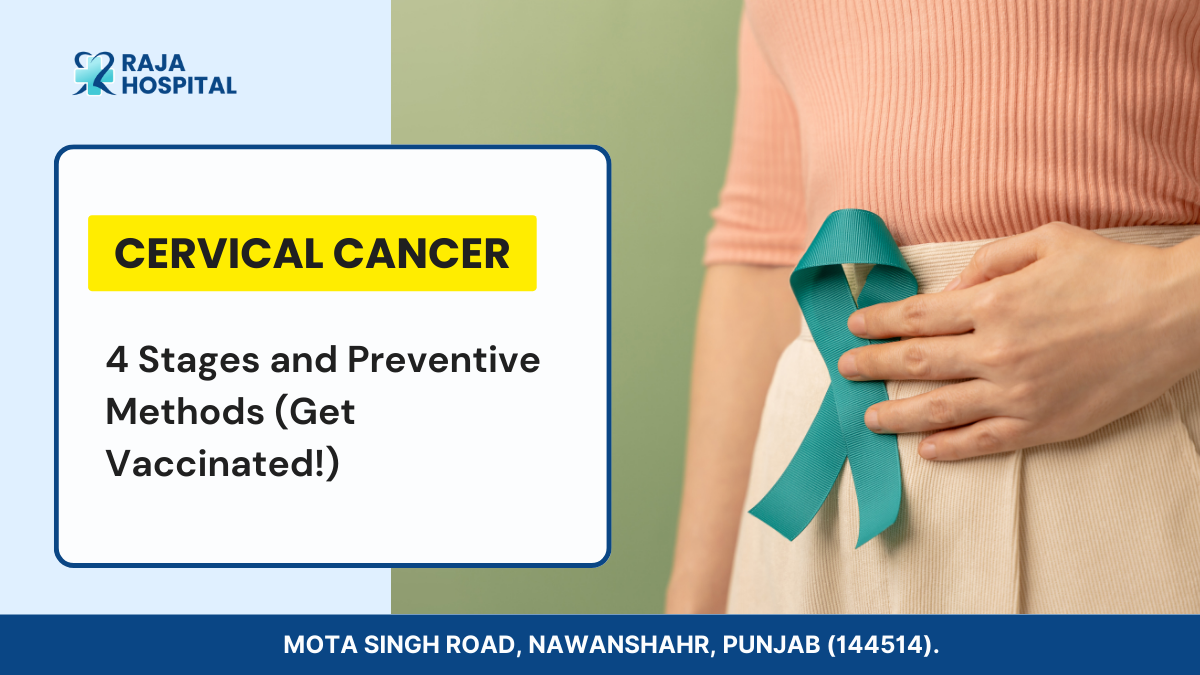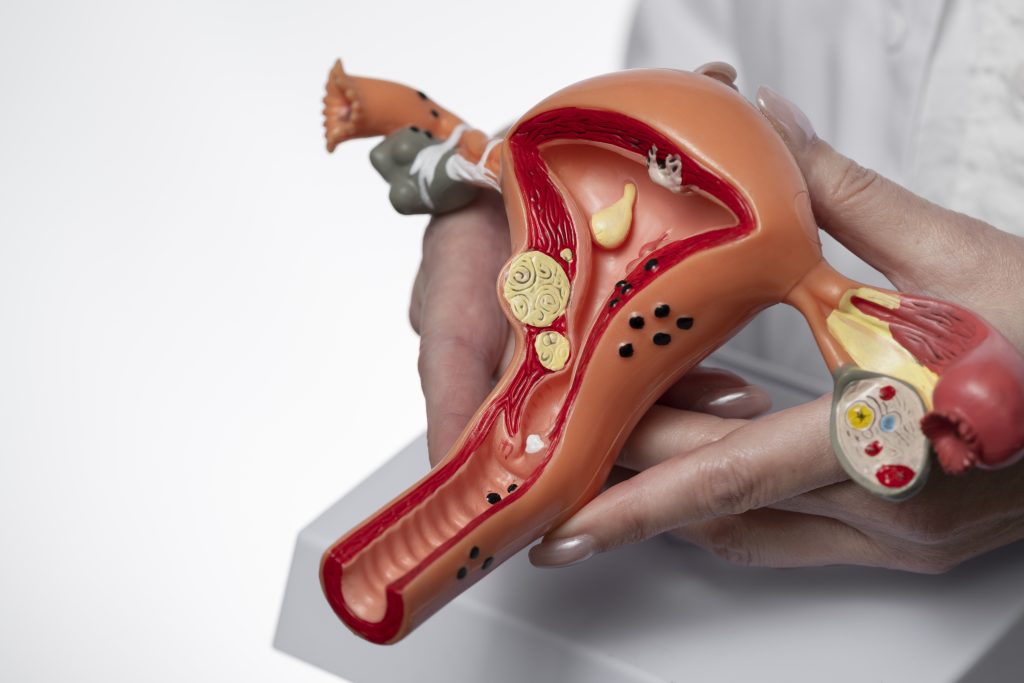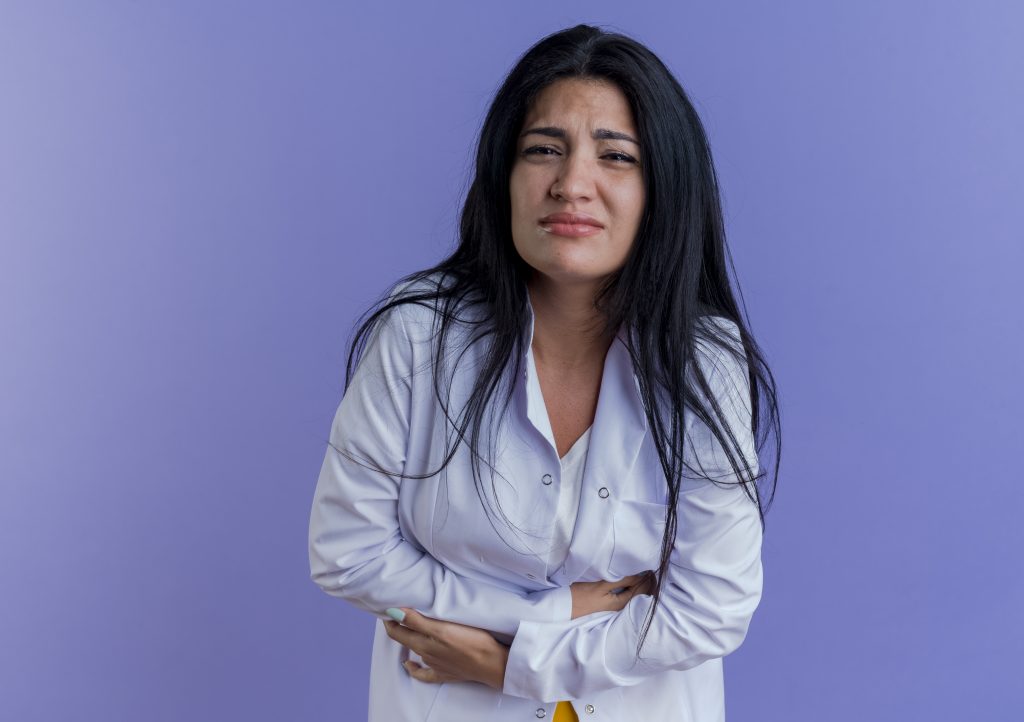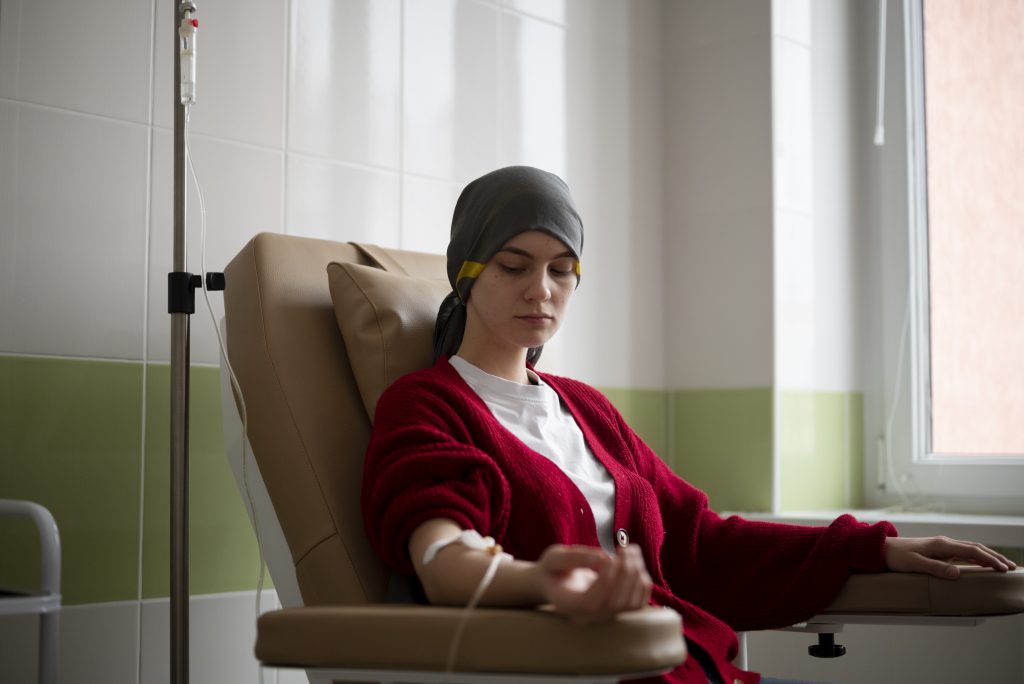Cervical Cancer: 4 Stages and Preventive Methods (Get Vaccinated!)

Reviewed By Dr. Lakshita Saini (MBBS, MS Obs & Gynae) ON 10TH january 2024.
Cancer! is the word when we hear everyone feel scared. Nowadays this has become a very serious issue as Cancer is more noticeable because many patients are suffering from some kind of cancer.
It was determined that 14,61,427 incident cases of cancer (crude rate: 100.4 per 100,000) would occur in 2022. Approximately one in nine people in India may have cancer at some time in their lives.
Cervical Cancer is a type of cancer that affects the cervix, the lower part of the uterus connecting to the vagina. It’s a common form of cancer among women, but with early detection and proper treatment, it can often be successfully managed. In this blog post, we’ll discuss Cervical Cancer and break down the four stages.
What is Cervical Cancer?

Cervical Cancer starts when cells in the cervix begin to grow out of control. Most cases of Cervical Cancer are caused by the human papillomavirus (HPV), a common sexually transmitted infection. However, not all HPV infections lead to Cervical Cancer, and in many cases, the immune system clears the virus naturally. When abnormal cells start developing in the cervical tissue of the cervix, then it is a condition called Dysplasia.
Two parts of the Cervix
- The ectocervix is the outer cervix visible during a gynecologic exam. There are flat squamous cells all over it.
- The endocervix is the inner cervix that makes canals that join the vagina and uterus. Mucus-producing glandular cells in the form of columns cover the endocervix.
Note: The boundary between the ectocervix and endocervix is known as the transition zone. This is where most Cervical Cancers start.
The age range in which women are diagnosed with Cervical Cancer is typically between 35 and 44, with an average diagnosis age of 50. It recently found in women under the age of twenty.
Many older women are unaware that they still have a chance of getting Cervical Cancer as they become older.
Common symptoms of Cervical Cancer

Abnormal Vaginal Bleeding:
- Unusual bleeding between periods
- Bleeding after intercourse
- Menstrual bleeding that is heavier or lasts longer than usual
Pelvic Pain: Persistent pain or discomfort in the pelvis or lower abdomen.
Pain During Intercourse: Pain or discomfort during sexual intercourse that is not normal for you.
Unexplained Weight Loss: Significant, unexplained weight loss without changes in diet or exercise.
Fatigue: Feeling extremely tired or weak, even with adequate rest.
Changes in Bowel or Bladder Habits: Changes in bowel or bladder habits, such as increased frequency or difficulty in urination.
Discomfort in the Legs: Swelling or pain in the legs, possibly due to the spread of the cancer
Remember, these symptoms can also be caused by conditions other than Cervical Cancer. However, if you experience any of these symptoms persistently or if they are unusual for you, it’s important to consult with a healthcare professional for further evaluation. Early detection and treatment can significantly improve outcomes for Cervical Cancer.
The Four Stages of Cervical Cancer:
Cervical cancer is typically classified into four stages, each representing the extent of the disease. These stages are determined based on the size of the tumor and how far it has spread.
Stage 1: Early Detection and Treatment
In the early stages of Cervical Cancer, the cancerous cells are confined to the cervix. This is often referred to as localized cancer. At this point, symptoms may be minimal or absent, which is why regular Pap smears and HPV tests are crucial for early detection.
Treatment for Stage 1:
Cervical Cancer usually involves surgery to remove the cancerous tissue. In some cases, a hysterectomy, where the entire uterus is removed, may be recommended. However, if fertility preservation is a concern, less invasive procedures may be considered.
Stage 2: Spreading Beyond the Cervix
If Cervical Cancer progresses to stage 2, it means the cancer has spread beyond the cervix but is still contained within the pelvic region. Symptoms may become more noticeable at this stage, such as pelvic pain or increased vaginal discharge.
Treatment for Stage 2:
Cervical Cancer often involves a combination of surgery, radiation therapy, and chemotherapy. The goal is to eliminate the cancerous cells and prevent further spread.
Stage 3: Beyond the Pelvis
In stage 3, Cervical Cancer has typically spread to the lower part of the vagina or nearby lymph nodes. Symptoms may become more pronounced, including difficulty urinating or swelling in the legs.
Treatment for Stage 3:
Cervical Cancer is more intensive and may include a combination of surgery, radiation therapy, and chemotherapy. In some cases, a radical hysterectomy may be recommended to remove the cervix, part of the vagina, and surrounding tissues.
Stage 4: Advanced and Beyond
The most advanced stage of Cervical Cancer is stage 4, where cancer has spread to distant organs such as the lungs, liver, or bones. At this point, the cancer is considered metastatic.
Treatment for Stage 4:
Cervical Cancer focuses on managing symptoms and improving the quality of life. Palliative care, which aims to relieve pain and discomfort, becomes a crucial component of the treatment plan.
While a cure may not be possible, medical interventions can help control the disease and enhance the patient’s well-being.
Preventive Methods for Cervical Cancer

Preventing Cervical Cancer starts with reducing the risk of HPV infection.
Vaccination For Cervical Cancer
There’s a vaccine called the HPV vaccine that can protect against the main types of human papillomavirus (HPV) that cause Cervical Cancer. It’s usually given to 9 to 45 years.
- HPV Vaccine at 11 or 12: It is advised to receive the HPV vaccine as a standard vaccination at the age of 11 or 12.
- Immunization Starting at 9: Immunizations can start as early as age 9 for the HPV vaccine.
- Vaccination Up to Age 26: If a person is not fully vaccinated at a younger age, the Advisory Committee on Immunization Practices (ACIP) recommends vaccination up until the age of 26.
- Two or Three Doses: Depending on the patient’s age at first immunization, the HPV vaccine is administered in a series of two or three doses.
- No Vaccination Advised Over 26: Vaccination is not advised for individuals over the age of 26.
- Consideration for Ages 27-45: Some adults between the ages of 27 and 45 may choose to receive the HPV vaccine after consulting with their clinician, especially if they were not fully vaccinated when younger.
- Reduced Benefits in Older Age Group: For individuals aged 27 to 45, the HPV vaccine offers reduced benefits, partly due to potential prior exposure to the virus.
Other Preventive Methods
Regular Check-ups: Go for regular check-ups and Pap tests. These tests can catch any abnormal changes in the cervix early on, making treatment easier.
Practice Safe Sex: Using condoms during sex can lower your risk of getting HPV, which is a major cause of Cervical Cancer.
Limit Sexual Partners: The more partners you have, the higher the chance of being exposed to HPV.
Quit Smoking: Smoking can increase the risk of Cervical Cancer. Quitting smoking not only helps prevent Cervical Cancer but has numerous other health benefits.
Healthy Lifestyle: Maintaining a healthy lifestyle, including a balanced diet, regular exercise, and managing stress, can contribute to overall well-being and lower the risk of Cervical Cancer.
Remember, early detection and healthy choices go a long way in preventing Cervical Cancer.
Frequently Asked Questions About Cervical Cancer

If you have concerns or questions about cervical cancer, let’s address some frequently asked questions (FAQs) about cervical cancer to provide you with valuable information.
Conclusion
Understanding the stages of Cervical Cancer is vital for everyone, as it empowers individuals to take control of their health through preventive measures and early detection.
Regular screenings, healthy lifestyle choices, and prompt medical attention can make a significant difference in managing Cervical Cancer and improving outcomes.
By staying informed and advocating for regular check-ups, we can work towards a future where Cervical Cancer is not only treatable but preventable. Don’t ignore symptoms like irregular bleeding or discomfort. Take control of your health – visit Raja Hospital for a Cervical Cancer screening today. Early detection saves lives!
